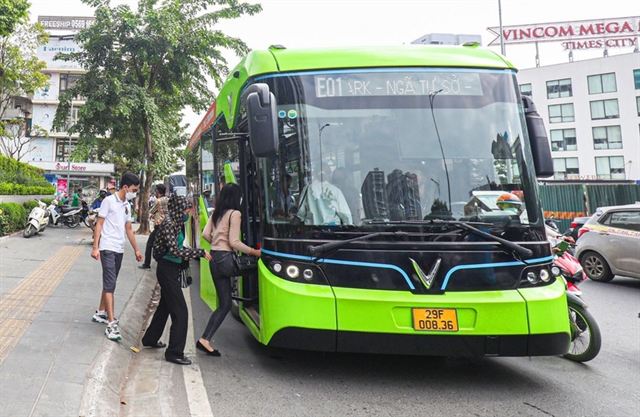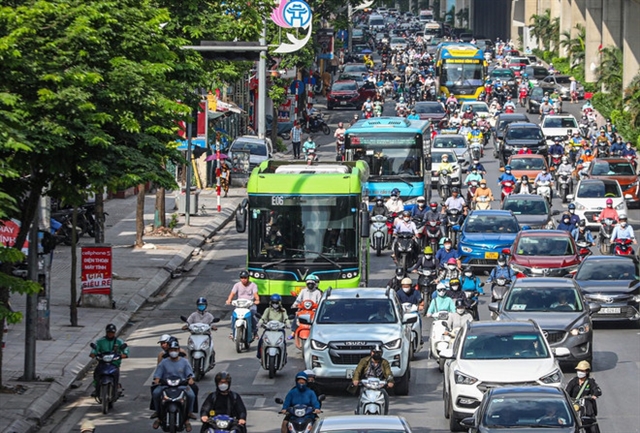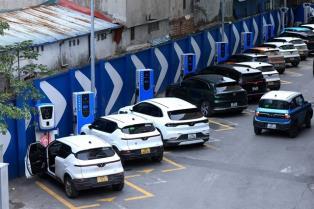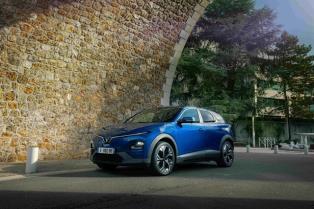According to the Ministry of Construction, by mid-2025 the country had about 350,000 electric cars and more than 2.5 million electric motorbikes in circulation. These numbers are expected to double by 2030 as charging infrastructure expands.

HÀ NỘI — Việt Nam’s electric vehicle revolution is gathering pace, with around 350,000 electric cars and more than 2.5 million electric motorbikes on the roads by mid-2025, according to the Ministry of Construction. Those figures are expected to double by 2030 as charging infrastructure expands nationwide.
The surge underscores how Việt Nam is keeping up with the global shift towards greener transport. In the automobile sector, VinFast has emerged as a trailblazer, not only dominating the domestic market but also exporting to the United States, Canada and Europe. Meanwhile, in the electric motorbike segment, brands such as Dat Bike, Detech, Yadea and VinFast are driving healthy competition and giving consumers more choice.
Charging infrastructure, once considered a key obstacle, is improving rapidly. Hundreds of charging stations have already been installed in Hà Nội, HCM City, Đà Nẵng and other provinces, laying the groundwork for widespread EV adoption.
From an environmental perspective, the switch to electric vehicles has strategic importance. The transport sector currently contributes more than 18 per cent of Việt Nam’s total CO₂ emissions. According to the Institute of Strategy and Policy on Natural Resources and Environment (ISPONRE), if EVs make up 30 per cent of all vehicles by 2030, the country could cut more than 10 million tonnes of CO₂ annually – a crucial step towards its net-zero target by 2050.

However, the journey towards green mobility still faces many challenges: charging networks remain uneven, electricity supply is limited and EV prices are still high compared with average incomes. To achieve the goal of one million electric cars by 2030, Việt Nam must complete its legal framework, expand tax and credit incentives and support domestic production of batteries and charging stations.
Experts also stress that alongside EV development, Việt Nam should aim for a fully sustainable transport system that integrates clean vehicles, public transport and smart urban planning. Raising public awareness about the benefits of EVs – from low operating costs to positive environmental impact – will be key to ensuring long-term growth.
Charging standard
Vice Chairman of Thành Công Group Lê Ngọc Đức said tax and fee incentives for electric cars were approved by the National Assembly and the Government in 2022. Registration fees for electric cars have been reduced to zero and special consumption tax rates have been significantly lowered until the end of 2027. Many provinces and cities are discussing plans to establish low-emission zones (LEZs), moving towards restricting internal combustion engine vehicles. However, the most critical foundation for supporting EVs – the charging infrastructure – remains inconsistent, with each place doing it its own way.
Đức noted that some charging station investors have said they do not lack either capital or technology and are ready to deploy thousands of charging points immediately. Yet the absence of a clear legal framework makes them cautious, fearing regulatory risks.
Chairman of TMT Motors Bùi Văn Hữu said the company has plans to invest in 30,000 charging stations nationwide by 2030. However, the main issue, he explained, is that there is still no common technical standard for charging stations and no clear infrastructure plan for electric vehicle charging.
The Ministry of Science and Technology has long completed a draft of the national technical regulation (QCVN) for charging poles but has yet to officially issue it. As a result, companies investing in charging stations can only refer to several Vietnamese Standards (TCVN) adapted from IEC guidelines on charging equipment, connectors and electrical installation.
However, these TCVN standards are voluntary and cannot replace QCVN, which provides the compulsory legal basis for conformity certification, CR labelling, acceptance testing and lawful operation, Hữu stressed. — VNS





